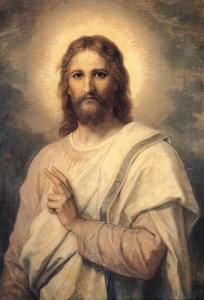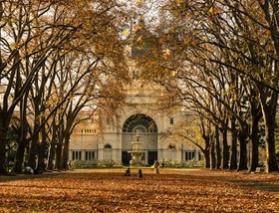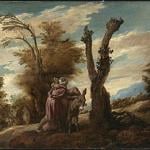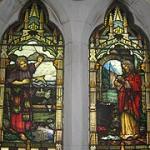
Concluding the Sermon on the Mount, after warning about “corrupt” trees, Christ explained, “Many will say to me . . . hath we not . . . in thy name . . . done many wonderful works? And then will I profess unto them, I never knew you” (Matthew (7:22-23). His followers knew of His teachings and His miracles. But the Savior wanted more. Reflecting on His teachings and His prophets’ testimonies, we realize that many who have followed Christ (then and now) never knew Him as He wants to be known.
Some Who Never Knew Him
Surely we know the Savior of the World. John testified, “This is life eternal, that they might know thee the only true God, and Jesus Christ, whom thou hast sent” (John 17:3).
Joseph Smith translated Matthew 7:23 differently: “I never knew you” became “You never knew me” (footnote a), expanding our perspective on this scripture. The Savior knew those to whom and for whom He gave His life. But many of his most vocal followers never knew Him.
Five of ten waiting Virgins received the same rebuke. Five virgins knew the “bridegroom” wanted them to provide light for His guests. They came prepared to give light, bringing their lamps and necessary oil.
The other five brought lamps but didn’t seem to think in terms of light. They came without oil. When the bridegroom needed their light, they scrambled to buy oil. But the procession couldn’t wait—they were locked out.
Like the Sermon listeners, the tardy virgins were told, “I know you not,” translated by Joseph Smith as “Ye know me not” (Matthew 25:1-12, footnote b). How could they not know the bridegroom?
Knowing about Him was and is not the same as knowing Him. The more important knowledge—His desire for them to give light and for His guests to benefit from that light—they never knew.
Some Who Do Know Him
David A. Bednar spoke of coming to know Christ as we engage in in-depth scripture study, “pray to the Father in His name with real intent,” and seek continual guidance from the Holy Ghost.
“Real intent” is key. Reading quickly through the scriptures, praying casually, and mentioning the Holy Ghost occasionally can help you know about Christ, but you may understand later that you never knew Him.
Those who walk with Him know Him best. Elder Bednar highlighted Christ’s statement in D&C 84:88: “For I will go before your face . . . and my Spirit shall be in your hearts, and mine angels round about you, to bear you up,” continuing,
We come to know the Savior as we . . . go where He wants us to go . . . say what He wants us to say, and . . . become what He wants us to become. As we submissively acknowledge our total dependence upon Him, He enlarges our capacity to serve . . . [and] our desires align more completely with His desires, and His purposes.1
Tracy Y. Browning spoke of Christ’s personal guidance. “He directs our mouths to testify of Him, our hands to lift and serve as He would lift and serve, our eyes to see the world and each other as He does . . . And as we allow Him to direct us in all things . . . where we look for Him we will find Him [Jeremiah 29:13].2
His Example of Discipleship
Many others in our dispensation have known the Savior. Also Zenos, an ancient prophet, knew Christ long before mortality. Discussion of the Tame and Wild Olive Trees usually concerns Israelites and gentiles struggling and gathering. Jeffrey R. Holland is one who considers Christ to be the servant and central figure.3 His book did not develop this view.
I want to develop it here. Jesus was the ideal servant, and the master of the vineyard was, of course, the loved and esteemed Father He served.
From the first vineyard visit, the Master and Servant conferred with mutual understanding and respect. The Master described the need to save the tame tree, along with His plan. United, the Servant grafted wild branches into the tame tree while the Master took the few remaining tame branches elsewhere in the vineyard.
On the second vineyard visit, they found good fruit from the original tree roots and also from two branches planted in poor ground. The Servant felt free to ask why the Master had taken two of the three branches to poor ground. He trusted the Master perfectly and accepted His response for the worst spot: “Counsel me not; I knew that it was a poor spot of ground . . . [but] it hath brought forth much fruit.” The third branch, in good ground, gave good and bad fruit.
More time passed before the third vineyard visit. The “tame” Israelites and “wild” gentiles no longer lived peacefully. Wild fruit was cropping out all over the vineyard. When the Master considered destroying it, the Servant took the Savior’s role as avocate: “Spare it a little longer.” The Master listened to His Servant’s observations: in “the loftiness of thy vineyard” the wild branches overbalanced the good roots, “taking strength unto themselves.”
The Servant pleaded for mercy (as Savior-Servants do). Extensive work was needed. The Servant was sent to bring other servants: “that we may labor diligently with our might.” The Master labored with the servants, and “they did obey the commandments of the Lord of the vineyard in all things.”
Perfect Master, perfect Servant—Perfect Father, Perfect Son. They knew each other well; they loved, respected, and trusted each other. We can learn so much as we come to know them.













